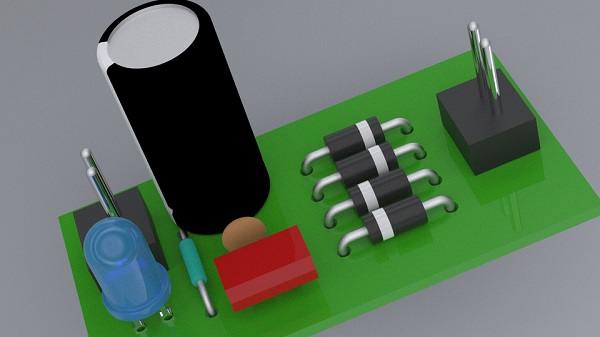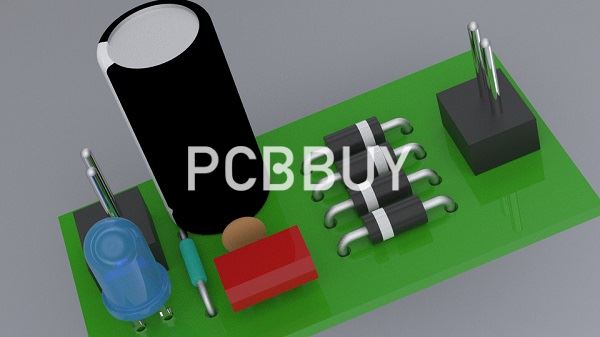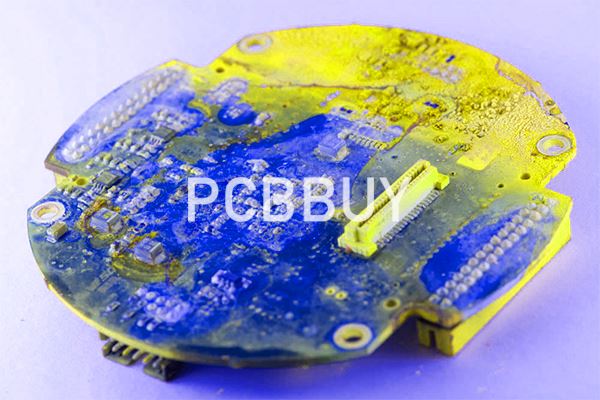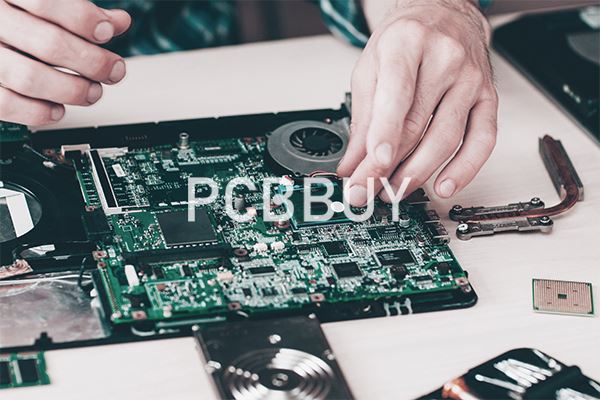How to Test Power Supply PCB with Design Guidelines?
By:PCBBUY 04/22/2022 10:10

Although the organization is important in the layout of any given PCB, it is even more important in the layout of a power PCB. Remember that power PCBs deal need to handle a lot of energy for a very compact design that needs to handle larger currents.
If you are going to learn more about power supply PCB design, please check and read the content in this passage for more professional knowledge.

What are the layout considerations for power supply PCB design?
The above schematic shows a line-powered power supply which utilizes the flyback topology to convert high voltage DC to low voltage DC. The schematic was made to understand the high voltage side and low voltage side clearly. In the high voltage side, we have a fuse as a protection device, then the mains voltage is rectified and filtered by the input rectifier diodes D1, D2, D3, D4, and capacitor C2, this means the voltage level in between those lines can reach more 350V or more at a given point in time. Engineers and technicians should be very careful while working with these potentially lethal voltage levels.
Another thing to be very cautious about is the filter capacitor C2, as it holds the charge for a long time, even when the power supply is disconnected from the mains. Before we proceed with any testing of the SMPS circuit, this capacitor needs to be discharged properly.
The switching transistor T2 is the main switching transistor, and T1 is the auxiliary switching transistor. As the main switching transistor is responsible for driving the main transformer, it is most likely to get very hot, and as it comes with a TO-220 package there's a chance that the hit sink will have high voltage on it. The test operator has to be extra careful in this section. One of the most important parameters to take note of is the transformer section. In the schematic, it is denoted as T1, the transformer T1 in conjunction with the optocoupler OK1 provides isolation from the primary side. In a test situation where the secondary section is connected to earth ground and the primary section is floating. The situation connecting a test instrument in the primary section will cause a short circuit to the ground, which can permanently damage the test instrument. Other than that, a typical flyback converter needs a minimum load to work properly otherwise the output voltage cannot be regulated properly.

What are the options of power supply PCB design?
The first step in power supply is to choose the type of power supply you wish to use for your device. Unregulated power supplies are a down-and-dirty option for converting AC power from a wall outlet to a DC voltage. The output from these supplies will contain a ripple waveform as the output is not smoothed with a regulator. Modern applications use a regulated power supply, where this ripple is minimized.
There are two principal options for regulating DC output from power supplies: using a linear regulator or a switching regulator, which is sometimes called a switch-mode power supply. These types of power supplies pass the DC output from a full wave rectifier to a regulation circuit, which smooths the ripple waveform that is superimposed on the desired DC output. These regulators can also be used to directly regulate a DC power source like a battery. Linear regulators have very low noise, but they tend to be bulky due to the use of heatsinks or other active cooling measures required for thermal management. The significant heat dissipation in these power supplies is responsible for their low efficiency.
In contrast, a switched mode power supply provides much higher efficiency over a broad current range, allowing these power supplies to take on smaller form factor. However, these power supplies use a PWM circuit to smooth and regulate the output voltage, which requires the use of an active switching component (normally a MOSFET). This means that the system radiates strong EMI, and the output will contain spikes due to switching noise. This switching noise can appear as a ringing signal on the output (i.e., conducted EMI), and this noise needs to be filtered from the output.
How to process the power supply PCB test?
Step-1: Plugging:
This is the first and basic step in circuit board testing. For this step to work out, you first need to observe the polarity and then probe in the multimeter. Every multimeter device comes with two types of probes, namely red and black. While the red one is the positive probe, the black one is the jack at the end of the probe wire.
Step-2: Testing:
Here comes the critical step wherein you need to select the multimeter function first to check a circuit board. Multimeters are modeled in such a way that they can measure both voltage and resistance. In case you have to test the power or voltage, turn the function knob or select the AC or DC voltage. The circuit board and the overall voltage will then be displayed on the device.
Step-3: Checking:
We all know that circuit boards are made up of many components in general and are placed inside an electrical device. Thus, to know if all parts are working in sync with each other, you first need to unplug the device and the housing. Then switch it on and make sure that you do not touch any of the wirings.

Step-4: Measure Voltage and Resistance:
The next thing to do using a multimeter is to check for voltage and resistance. For this step to work out smoothly, you need to do a basic test first. To test circuit board properly, touch the multimeter probes to the test points present on the board.
Make sure while playing out this step you have your hands on the plastic portion of the probes. You can then go on to check either the voltage or resistance. When measuring the resistors’ resistance, connect one probe to the end of each resistor.
Step-5: Check The Final Result
We all know that multimeters are used for checking the working functionality of the circuit board. Thus, to check and see if all the components are working properly repeats the step 1 to 4 for every component present on the board.
In this way, you can single out all the faulty components on the board. Always remember that you have to proceed systematically for all things to work out. From the first instance, when the incorrect voltage is found to check the preceding component’s output pins, every step has to be followed very keenly.
Troubleshooting a PCB is very important nowadays. It is because, with the rising demand for electrical appliances, the supply for circuit boards has also increased. Thus, a minor distraction in the board can make it non-functional or damage the components. This can be easily traced with the help of a multimeter.
Industry Category











